This flower is known in the world of gardeners as sansevier. Among amateurs it is also called "pike tail". This plant is considered to be medicinal and needs good maintenance. Photos of the plant can be viewed on the Internet, on sites dedicated to medicinal plants.
I must say that the "pike tail" has become the source of the birth of a variety of signs. Some of them can explain the elementary laws of chemistry. It is impossible to explain why other reasons appeared.
Of course, everyone who grows a "pike tail" and takes care of it at home, asks if this plant is beneficial, is it harmful to their environment?
Sansevier features
 The originality of this plant lies in the absence of a stem. This is very clearly visible in the photo. Leaves are very wide, pointed towards the top. They originate from one nest, as they grow, they rush to the top. Therefore, a solid bush really resembles pike tailsstuck in the ground.
The originality of this plant lies in the absence of a stem. This is very clearly visible in the photo. Leaves are very wide, pointed towards the top. They originate from one nest, as they grow, they rush to the top. Therefore, a solid bush really resembles pike tailsstuck in the ground.
The height of the leaf depends on the specific type of plant. At home, you can find sheets reaching one meter, or you can see a "pike tail" that has very short leaves, but there are a lot of them, and they originate from one outlet.
This is a plant demanding care, in domestic conditions, belongs to the class of evergreens and is found in Africa and the Asian tropics. The "pike tail" has a creeping rhizome, its leaves are covered with a waxy coating of a very dense consistency.
This plaque protects the leaves by preventing moisture from evaporating. Therefore, the plant may feel good in a short-term drought. It calmly transfers dry indoor air.
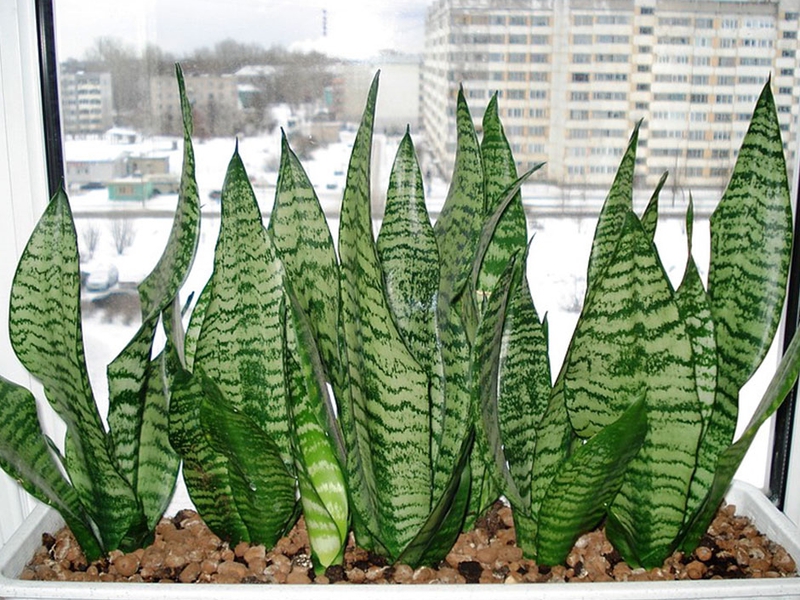
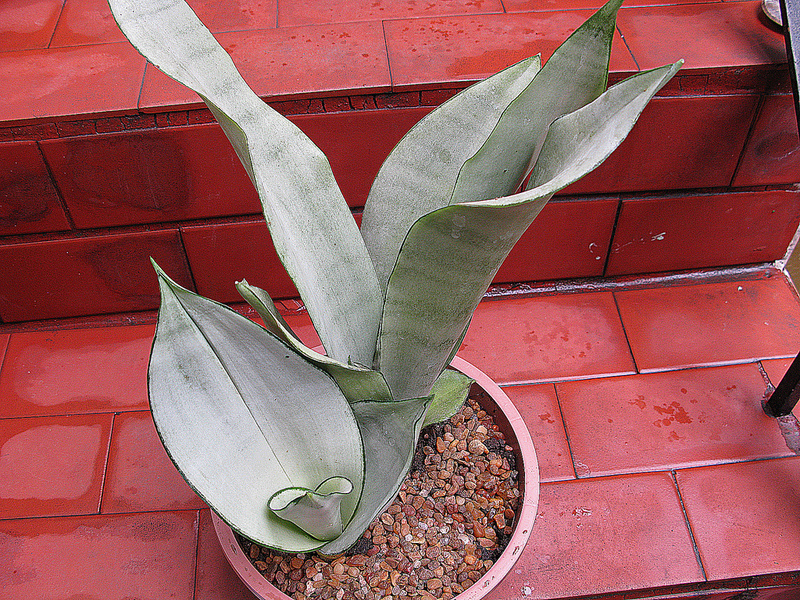
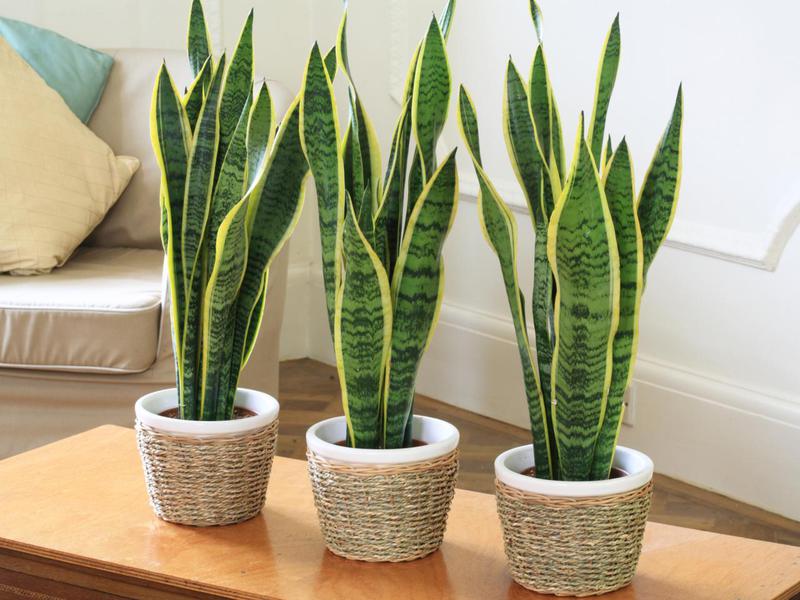
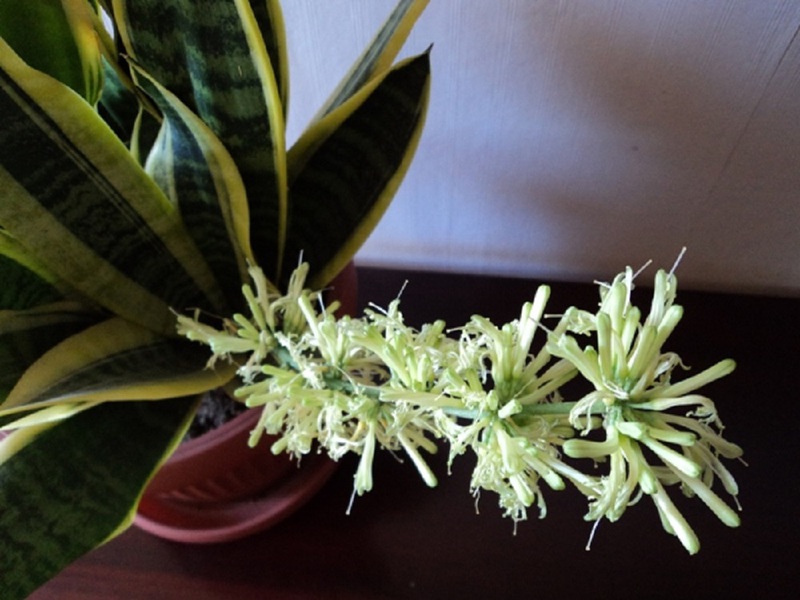
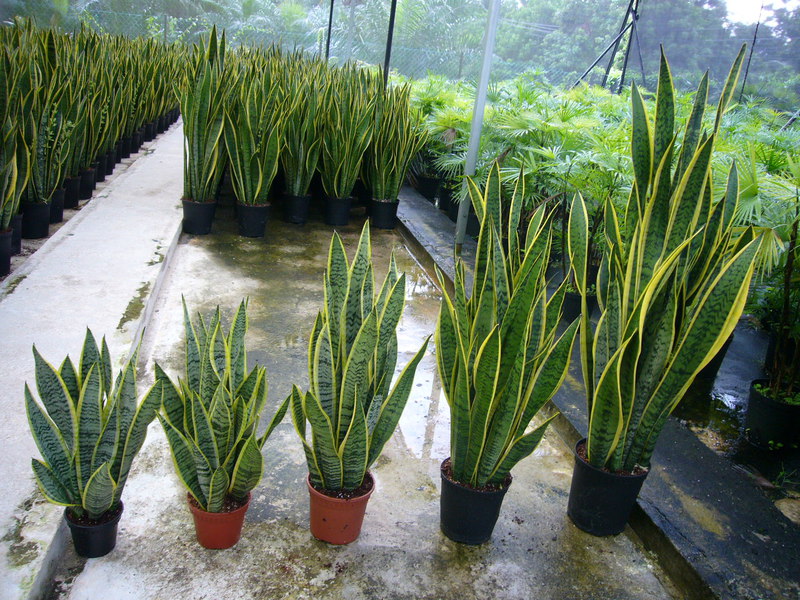
Only a small number of gardeners who grow and take appropriate care of the "pike tail" at home know that this plant is not considered decorative leafy, it has the ability to bloom.
Its buds begin to tie on a very thin peduncle, which originates from one or more rosettes with leaves. The flower petals are usually white-green in color.
The flower begins to bloom and bloom in the evening, closes at sunrise. During this period, the plant requires special care and attention.
In addition to such an unusual cycle of the plant's home life, gardeners talk about a strong pleasant scent of flowersreminiscent of a vanilla smell.
The evolving nectar attracts insects to the sansevier. Therefore, pike-tail pots are often placed near bushes that require pollination. This neighborhood can be considered mutually beneficial.
How the "pike tail" reproduces
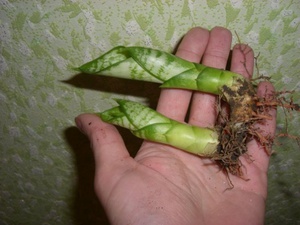 The best time for this is late spring or early summer. The simplest way to reproduce is to use side shoots. They are planted in a cramped pot, which speeds up their growth and development.
The best time for this is late spring or early summer. The simplest way to reproduce is to use side shoots. They are planted in a cramped pot, which speeds up their growth and development.
The plant can reproduce in different ways: side shoots, leaf and separation of the rhizome.
For reproduction of the "pike tail" by dividing the rhizome, it is necessary to divide the root into parts with a sharp knife, in which the growth point must be present. The place of the section should be sprinkled with coal.
Each bush is planted in a pot, where a sandy substrate is previously poured.The transplanted bushes do not need to be watered very often, once a day is enough.
For leaf propagation, the leaf is cut into small pieces, six cm in size. The cut is air-dried. Then it is processed "Kornevin", then planted in a peat mixture with sand to a depth of two cm. The moisture content of the mixture should be moderate, otherwise the plant may begin to rot.
What are the benefits of the "pike tail"
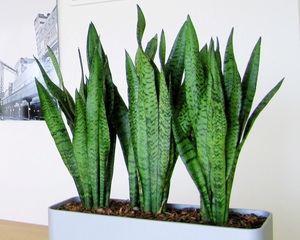 This plant is used in a wide variety of fields. First of all, it is an excellent choleretic agent. Traditional medicine uses sansevier as an excellent anti-inflammatory agent... Leaves applied to the wound promote its rapid healing.
This plant is used in a wide variety of fields. First of all, it is an excellent choleretic agent. Traditional medicine uses sansevier as an excellent anti-inflammatory agent... Leaves applied to the wound promote its rapid healing.
Such properties make it possible to use the house plant externally, or as an internal preparation. Homemade pike-tail leaves can be used in the same way as aloe leaves, they need to be applied to the wound for quick healing.
Almost all elements of the home "pike tail" are used in medicine. Finely chopped root has strong immunomodulatory effect... Medicinal decoctions are made from it, which have a preventive effect on colds.
In addition, homemade "pike tail" has several beneficial properties:
- Antiviral.
- Fungicidal.
- Diuretic.
Of course, if you use this house plant, haphazardly, you can harm yourself. To use it, you need to know well the individual tolerance of your body and the diagnosis of the disease.
Basically the plant is absolutely harmless... It can be used to treat a wide variety of colds:
- Cough.
- Bronchitis.
- ARI.
A great positive effect is given by the use of sansevier in the treatment of other diseases:
- acne;
- dermatitis;
- skin ulcers;
- female diseases.
Medicinal features of the plant "Pike tail"
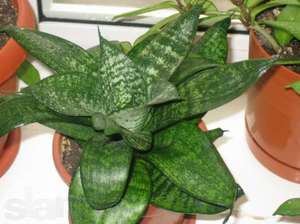 According to traditional medicine, the plant has a beneficial effect on the nervous state of a person, it perfectly cleans the air. The microclimate is improving in the room.
According to traditional medicine, the plant has a beneficial effect on the nervous state of a person, it perfectly cleans the air. The microclimate is improving in the room.
Professional doctors are skeptical about the benefits of this plant. However, it has long been recognized as a medicinal plant, but not widely used in comparison with, say, chamomile.
I must say that the "pike tail", with proper care, reduces the harmful effects of radiation from a computer, so it is often installed next to the monitor.
Of interest are also the mythical properties of the plant, which defy explanation by the natural laws of nature. For example, where there is a home flower, people very rarely quarrel, there are no scandals and petty squabbles.
People who are often near the flower, who take care of it constantly, begin to feel more confident, male potency improves.
The human body practically ceases to feel magnetic storms. Premises cleared of viruses, especially from carriers of ARVI.
"Pike tail" helps if a person has:
- Stressful state.
- Mood swings.
- Fatigue.
- Decreased concentration.
This is due to the fact that the home flower has a strong impact the work of the nervous system and the brain.
Can the "pike tail" harm the body?
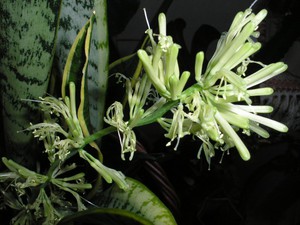 The harmful effect of a flower is mainly associated with various signs that have no scientific justification. For example, a domestic flowering plant, as the popular rumor has it, becomes the cause of family breakdown.
The harmful effect of a flower is mainly associated with various signs that have no scientific justification. For example, a domestic flowering plant, as the popular rumor has it, becomes the cause of family breakdown.
However, there is another opinion. This plant must necessarily be in the house, where they often quarrel or conflict situations constantly arise.
There is no single general opinion regarding the harm that a flower can bring. The opinion of the owner of the house means a lot. If he thinks that the "pike tail" brings joy to the house, this usually happens.
The real harm the plant can do to health if you start to take it inside, not observing the dosage... The consequences can be irreversible.
Most often, the plant is used as external wound healing agent... This method is considered the safest, it has no contraindications.
"Pike tail" refers to plants of a highly allergenic group. This must be remembered for people who have allergic diseases. In this case, it is better not to experiment with herbal remedies.
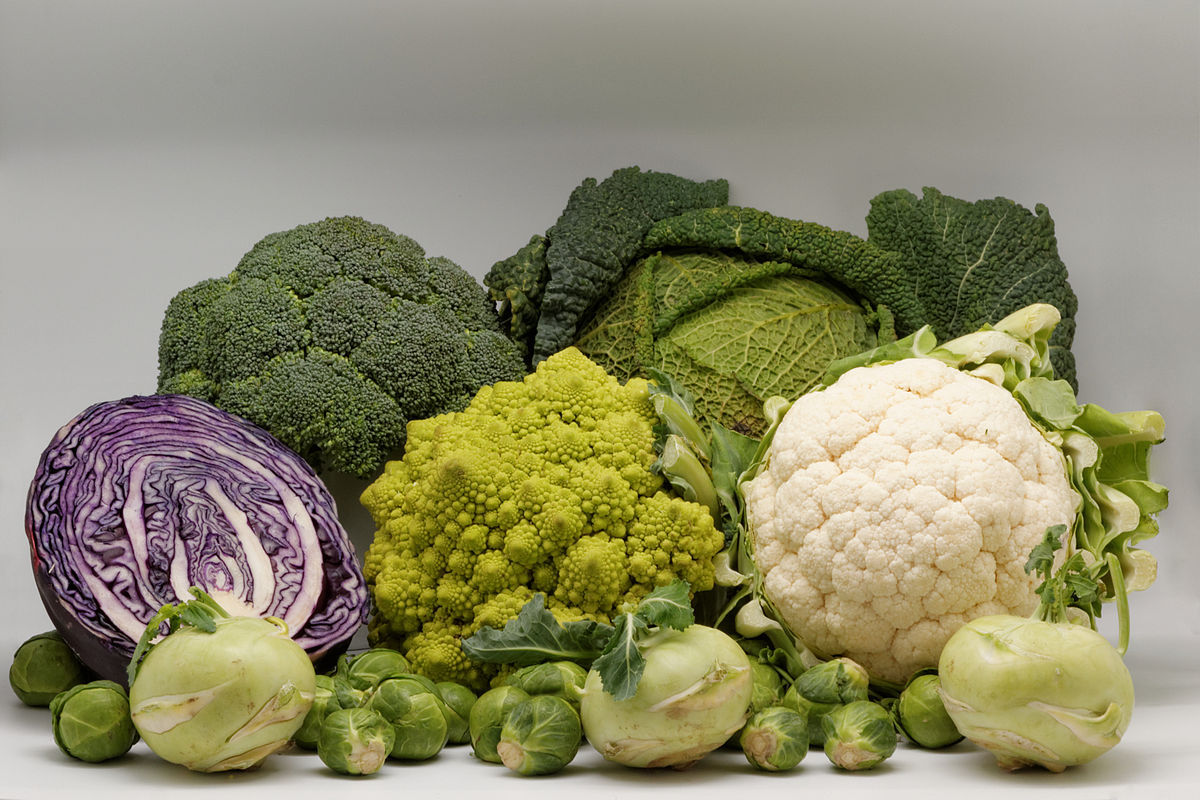
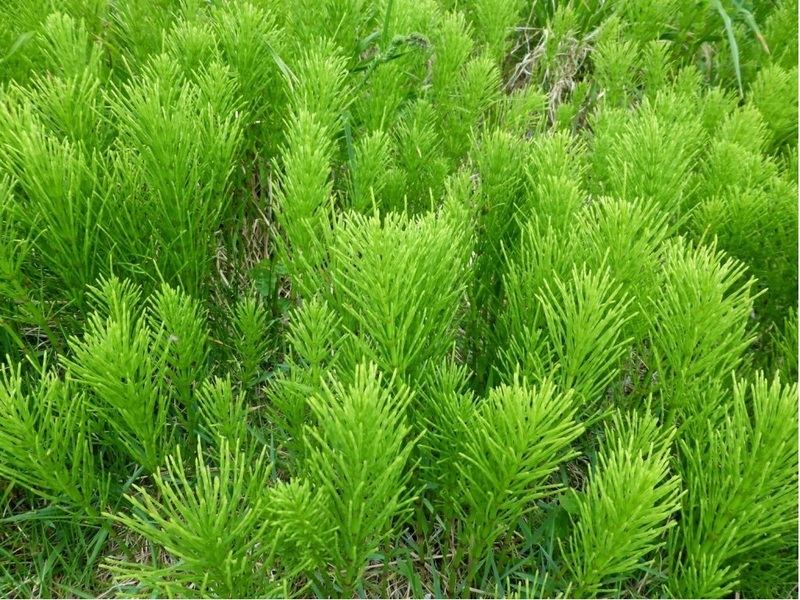
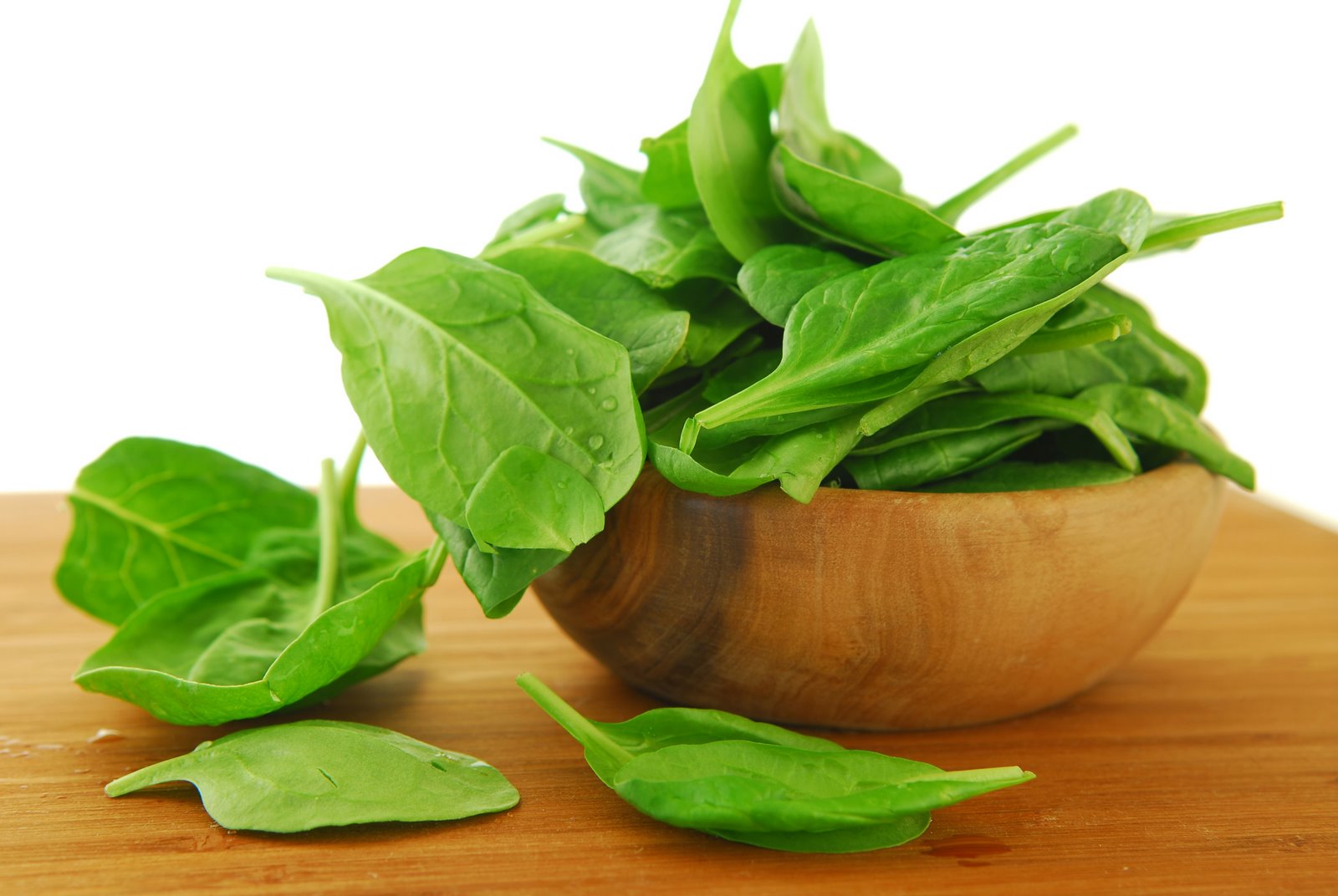
1 comment